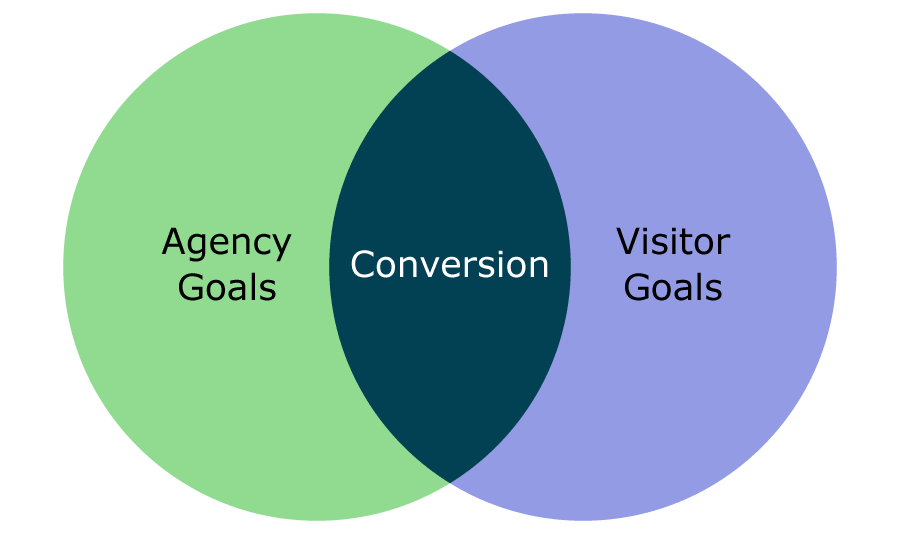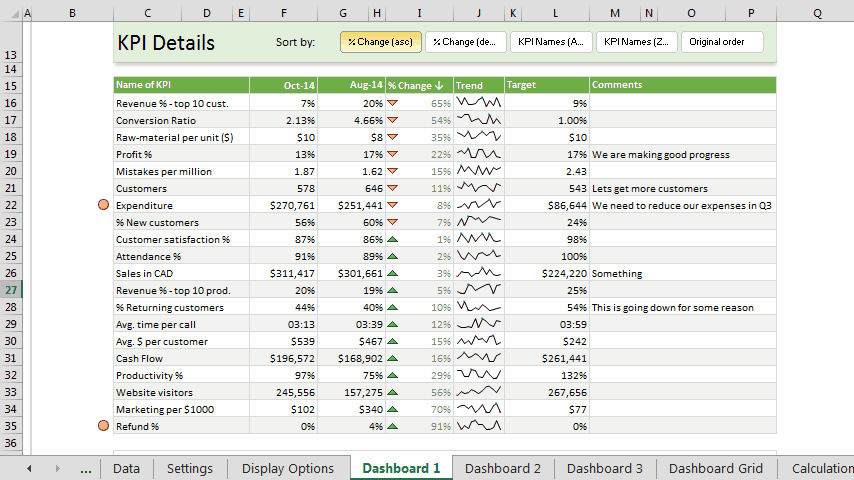
February 21, 2017
Content Strategy: Why Your Business Goals Come First
You know that quality content is important to your audience, but is it working for you? Learn how content strategy can support your own business objectives.
What is Content Strategy?
Most people think of content strategy as written copy. Of course writing for web is an art. You have to consider SEO, accessibility and engagement with ever-shortening attention spans. However, while effective copywriting is an important part of content strategy, it’s only a fraction of the bigger picture.
Content strategy is a high-level vision that guides content creation to deliver against both:
- user goals and
- a business objective
Understanding your agency’s business goals is crucial to forming an efficient content strategy. What’s the point of having people on your site without a clear understanding of what you want them to do? You say you need a content makeover, but do you clearly understand why?
What Do YOU Want?
State agencies rarely like to think of themselves as a business with goals and performance measures. But essentially, you are. Knowing what you want your users to do while on your site is the crux of content strategy.
Remember, content strategy is a high-level vision that guides content creation to deliver against both: 1) user goals and 2) a business objective. There is a beneficial reason for you to have a successful website. What is it?
What are your goals? (Use this
Content
Strategy Planner template
to establish your core goals.)
- Establish credibility?
- Create awareness?
- Expose services?
- Drive traffic?

| We want our audience to… | Because… |
|---|---|
| Read our FAQs. | It will reduce the amount of phone calls to support. |
| Use our forms. | It's the most efficient way to get their information into our database. |
| Sign up for our newsletter. | Se can sell upcoming events. |
| Give us feedback. | We want to improve our web services. |
| Engage on social media. | We want useful content on our site that can help others. |
How Do You Know You're Successful?
You don’t know if your content is successful if you have not defined success. Set your Key Performance Indicators (KPIs) so you know what to measure for each goal. Establish a solid, quantifiable number and timeline.
For example, if your goal is to get more people to sign up for your newsletter, your KPI might be a 5% increase in sign-ups in the next three months. The newsletter email sign-up list is your KPI. Keep track.
If your goal is to get more people to engaged in social media, set expectations of followers, retweets, comments etc. and then keep track of the activity. Measuring traffic to your content is pretty straight forward with analytics programs. The key is to set your goal and then measure.

Set your variables to indicate the success of your content. Track your KPI progress in a spreadsheet.
Key Performance Indicators (KPIs) are things you can measure. Some examples of KPIs are:
- Views / user behavior
- Shares
- Sign-ups
- Form submissions
- New users
After seeing results, you can now take steps to change your content strategy if needed to get the results you’re after. If, after a set timeline, you did not meet your own KPIs, identify room for improvement and optimize your content (or strategy) based on performance. Repeat.
To effectively measure and improve the success of your content, you must:
- Establish KPIs
- Check the data
- Make adjustments
Use
this template
for your agency to establish goals and KPIs for your digital content.
Get Started on Your Content Strategy
There are a lot of components to a successful content strategy. Providing valuable, usable content is just one part of the bigger picture. Identifying how this content is used and why is part of the overall business objective of your agency.
Follow these 6 steps to make sure your content works for your audience and YOU:
- Identify your audience
- Clearly describe your agency (under 1 minute)
- Make sure you “show up”
- Determine the types of content you need.
- Know YOUR goals
- Keep track of performance
